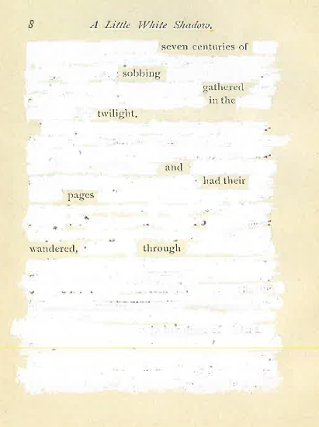
In this course we will study a literary form that has experienced a veritable boom in the last two decades, namely erasures. Writers are using erasure as a creative strategy to create new work; teachers are employing it as an educational game; companies are utilizing it for marketing purposes; and activists are turning it into a form of protest. What are erasures, then? Erasures look like censored documents. The author takes a published text and crosses out, paints over, or cuts out parts of it, transforming it into a sequence of words and gaps that make up the new work. Although the form can serve a broad array of purposes, erasures lend themselves particularly to the exploration of social justice issues. Since they are created through the partial effacement of prior texts, erasures literally put processes of obliteration on display and provide a structural analogy for both: the social erasure of marginalized groups and cultures by hegemonic discourses and politics and the criticism and rewriting of these practices to redress unjust conditions.
We will read erasures from different genres and across different media platforms in this course. Works may include Justin Torres’s queer National Book Award winning novel Blackouts (2023), #blackoutpoetry posts on social media, artworks by Jen Bervin and Titus Kaphar, and erasure poems by Janet Holmes, NourbeSe Philip, Philip Meters, Nicole Sealey, and Tracy Smith that expose and refute the rhetoric and politics of colonialism, slavery, genocide, warfare, political persecution, torture, police violence, and other forms of social subjugation. One of the larger questions we will explore in our discussions is how literature can intervene in and contribute to social conversations about justice, equality, and democracy.
- Trainer/in: Paula Höhn
- Trainer/in: Heike Schäfer